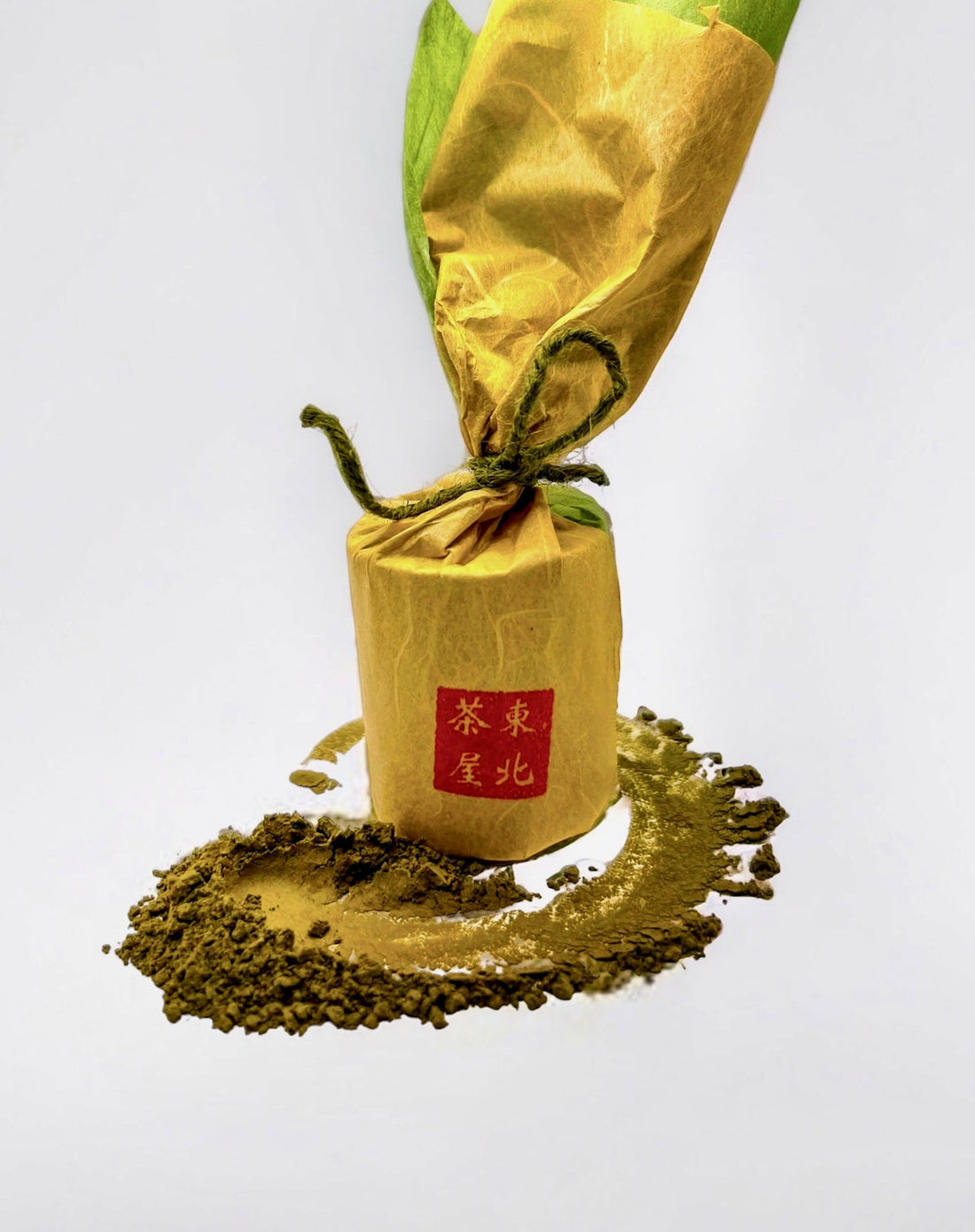First thing's first: white matcha is a thing. It is real, and though some people may tell you it is inauthentic, it actually has roots that predate matcha as we know it.
White matcha refers to milled white tea. White tea is a style of tea processing that involves very little intervention. The tea leaves are picked then dried. The drying slows down the oxidation process without stopping it completely, so white teas continue to age over the years, often for the better.
White tea is still from the tea plant - Camellia Sinensis - and therefore it has caffeine and loads of antioxidants, just like other teas. Generally speaking, white teas are smooth and mellow. When they are young, they are refreshing, slightly sweet, and fruity. With age, they become woody, spicy, and honeyed.
White tea becomes white matcha when it is milled. "Matcha" literally translates to "Milled Tea." So to argue that other teas can't become matcha is technically incorrect. That said, matcha has come to mean more than "milled tea." It has come to mean "shade grown Japanese green tea, milled into a fine powder." So, I'm hesitant to throw around the term with any kind of tea. I am not hesitant when it comes to white tea, however, since without milled white tea, modern matcha would not even exist!
History Time!
About 1000 years ago, during the Song Dynasty, China was the epicenter of Zen (Chan) Buddhism. All of the major players and famous teachers were there. Zen Buddhism was newer in Japan, however. As a result, all of the really committed Japanese students of Zen Buddhism tried to make their way over to the major centers of Zen learning in China.
It was in these Chinese temples that Japanese monks first encountered tea (and maybe became enlightened, but that doesn't concern us here). Any idea what they were served?
White matcha! Though, at the time, it was called "Diancha." This means "Pointing Tea," referring to the vessels with which brewers of this tea pointed their water into their bowls before whisking as vigorously as possible. Actually, it was common at the time to have whisking competitions, to see who could make the heartiest froth!
To be fair, Diancha was not just milled tea leaves. Perhaps because milling technology wasn't as refined at the time, tea producers would first make a pulpy mush with their tea, dry it into disks, and then finally mill it into a powder. Generally speaking, though, it was done with what would today be called white tea. At the time, loose leaf hadn't really come into being yet, so the definitions for each type weren't established.
Anyways, tea was inextricably tied to Buddhism already, so visiting monks were no-doubt exposed to it. We know this to be the case because it was a Zen Buddhist Monk, Eisai, who is credited as having brought the first tea seeds with him from China to Japan. It was Eisai who birthed Japanese tea culture, at first by importing Chinese tea culture, which revolved around Diancha.
Over the years, Diancha morphed in Matcha in Japan. Meanwhile, it fell out of favor in China as loose leaf tea came of age. In general, it has been lost to time - few people in China (or anywhere) drink it today, even though its previous existence is a known fact.
So, we've decided to help bring it back!
Diancha, revived.
Since we have a matcha mill, we figured why not try to make Diancha? The results have been extremely exciting!
Drinking a bowl of diancha, it is hard to understand how it ever lost its place in the world of tea. It is woodsy, spicy, and herbaceous. It froths exceptionally well. The white tea leaves don't mill as finely as matcha, I must admit, but it still makes a smooth powder. The shading of tencha definitely makes for thinner, more brittle tea leaves ideal for milling - and no white tea is grown with the same intent. It is also brown, as opposed to matcha's brilliant green color. So, this might account for some of its loss of popularity.
But, what is most remarkable about diancha is the way it feels. It hits differently than any other tea I've tried. Whereas matcha has a very calming feeling to it, diancha is invigorating and blissful. It does not produce the jitters, but it certainly provides a kick in the pants, and has turned more than a few bad days around for me.
I have also been very interested in seeing the effects of aging diancha. Since white tea actually gets better and more complex with time, the same should be true with milled white tea - although at a faster rate. A powder provides way more surface area than loose leaf, and so it ages quicker. That's the same reason why matcha needs to be fresh. But whereas matcha will degrade quicker than loose leaf, diancha can improve quicker than loose leaf. The result is a mellower diancha with more spicy and honey notes. At any rate, we start with white tea that is already 5 years old whenever we mill diancha ourselves. It certainly doesn't need the aging, but it's nice that there's less of a worry about consuming it all before it goes downhill.
Anyways, if all of this has you curious, you're in luck. We mill diancha ourselves on our granite mills here in Minneapolis. Just like our matcha, all diancha is milled-to-order. Check it out, and taste some history!

